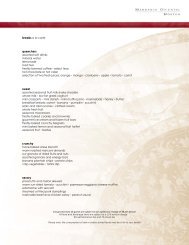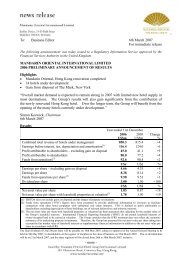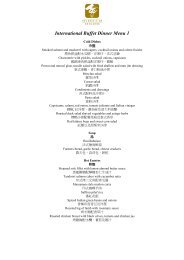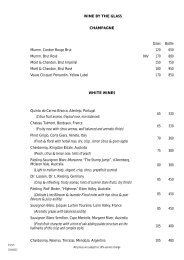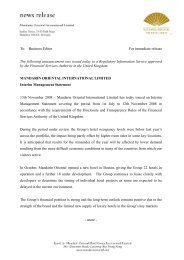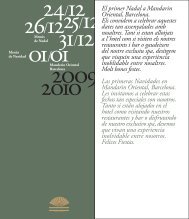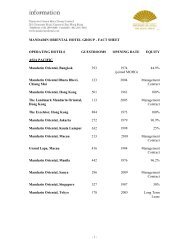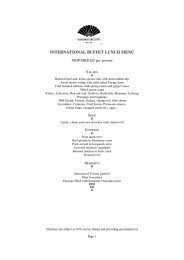Annual Report 2011 - Mandarin Oriental Hotel Group
Annual Report 2011 - Mandarin Oriental Hotel Group
Annual Report 2011 - Mandarin Oriental Hotel Group
Create successful ePaper yourself
Turn your PDF publications into a flip-book with our unique Google optimized e-Paper software.
<strong>Annual</strong> <strong>Report</strong> <strong>2011</strong> 33<br />
A Basis of preparation continued<br />
IFRS 12 ‘Disclosure of Interests in Other Entities’ (effective 1st January 2013) requires entities to disclose information<br />
that helps financial statements readers to evaluate the nature, risks and financial effects associated with the entity’s<br />
interests in subsidiaries, associates, joint arrangements and unconsolidated structured entities. Disclosure required<br />
includes significant judgements and assumptions made in determining whether an entity controls, jointly controls,<br />
significantly influences or has some other interest in other entities. The <strong>Group</strong> will apply the standard from<br />
1st January 2013.<br />
IFRS 13 ‘Fair Value Measurement’ (effective 1st January 2013) requires entities to disclose information about the<br />
valuation techniques and inputs used to measure fair value, as well as information about the uncertainty inherent<br />
in fair value measurements. The standard applies to both financial and non-financial items measured at fair value.<br />
Fair value is now defined as ‘the price that would be received to sell an asset or paid to transfer a liability in an orderly<br />
transaction between market participants at the measurement date’ (i.e. an exit price). The <strong>Group</strong> will apply the<br />
standard from 1st January 2013.<br />
Amendments to IAS 1 ‘Presentation of Items of Other Comprehensive Income’ (effective from 1st July 2012) improves<br />
the consistency and clarity of the presentation of items of other comprehensive income. The amendments require<br />
entities to separate items presented in other comprehensive income into two groups, based on whether or not they may<br />
be recycled to profit or loss in the future. Items that will not be recycled − such as actuarial gains or losses on defined<br />
benefit pension plans − will be presented separately from items that may be recycled in the future − such as deferred<br />
gains and losses on cash flow hedges. The amounts of tax related to the two groups are required to be allocated on the<br />
same basis. The <strong>Group</strong> will apply the standard from 1st January 2013.<br />
IAS 19 (amended <strong>2011</strong>) ‘Employee Benefits’ (effective 1st January 2013) requires the assumed return on plan assets<br />
recognized in the profit and loss to be the same as the rate used to discount the defined benefit obligation. It also<br />
requires actuarial gains and losses to be recognized immediately in other comprehensive income and past service costs<br />
immediately in profit or loss. Additional disclosures are required to present the characteristics of benefit plans, the<br />
amount recognized in the financial statements, and the risks arising from defined benefit plans and multi-employer<br />
plans. The <strong>Group</strong> will apply the standard from 1st January 2013.<br />
IAS 27 (<strong>2011</strong>) ‘Separate Financial Statements’ (effective 1st January 2013) supersedes IAS 27 (2008) and prescribes the<br />
accounting and disclosure requirements for investments in subsidiaries, joint ventures and associates when an entity<br />
prepares separate financial statements. There will be no impact on the consolidated financial statements as the changes<br />
only affect the separate financial statements of the investing entity.<br />
IAS 28 (<strong>2011</strong>) ‘Investments in Associates and Joint Ventures’ (effective 1st January 2013) supersedes IAS 28 (2008)<br />
and prescribes the accounting for investments in associates and joint ventures and sets out the requirements for the<br />
application of the equity method when accounting for investments in associates and joint ventures. The adoption<br />
of this standard is not expected to have any significant impact on the results of the <strong>Group</strong> as the <strong>Group</strong> is already<br />
following the standard.



